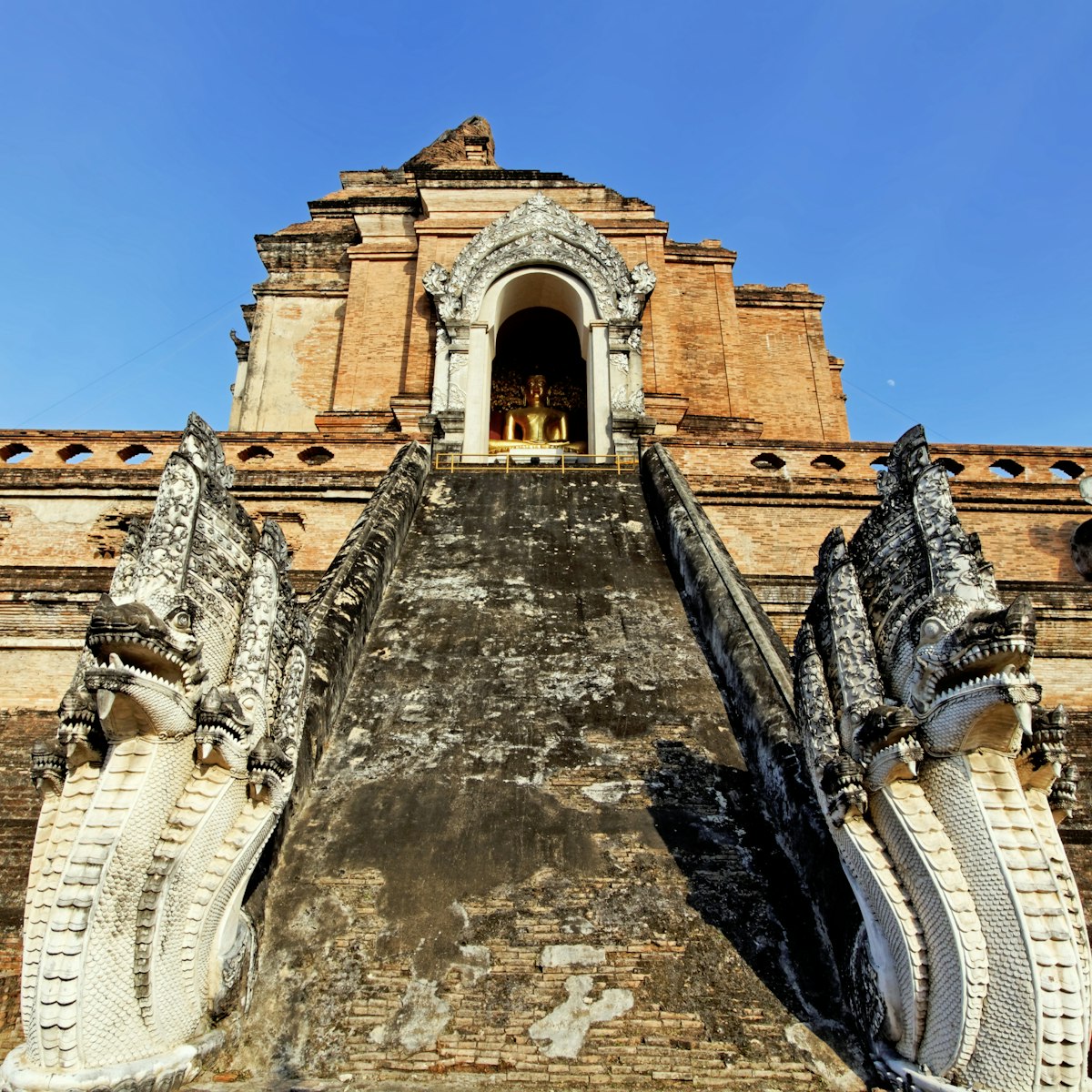Chiang Mai's most revered temple, Wat Phra Singh is dominated by an enormous, mosaic-inlaid ∑…√≠¬∑≥ÛƒÉ≥Û≤‘ (sanctuary). Its prosperity is plain to see from the lavish monastic buildings and immaculately trimmed grounds, dotted with coffee stands and massage pavilions. Pilgrims flock here to venerate the famous Buddha image known as Phra Singh (Lion Buddha), housed in Wihan Lai Kham, a small chapel immediately south of the chedi (stupa) to the rear of the temple grounds.
This elegant idol is said to have come to Thailand from Sri Lanka and was enshrined in 1367. The chapel is similarly striking, with gilded naga (serpent) gables and sumptuous ±Ù≤π汬∑∞Ï∞˘≤π≥Û≥æ (gold-pattern stencilling) inside.
Despite Phra Singh's exalted status, very little is known about the Phra Singh image, which has more in common with images from northern Thailand than with Buddha statues from Sri Lanka. Adding to the mystery, there are two nearly identical images elsewhere in Thailand, one in the Bangkok National Museum and one in Wat Phra Mahathat Woramahawihan in Nakhon Si Thammarat. Regardless of its provenance, the statue has become a focal point for religious celebrations during the Songkran festival.
As you wander the monastery grounds, note the raised temple library, housed in a dainty teak and stucco pavilion known as Ho Trai, decorated with bas-relief angels in the style of Wat Chet Yot. The temple's main chedi, rising over a classic Lanna-style octagonal base, was constructed by King Pa Yo in 1345; it's often wrapped in bolts of orange cloth by devotees.







